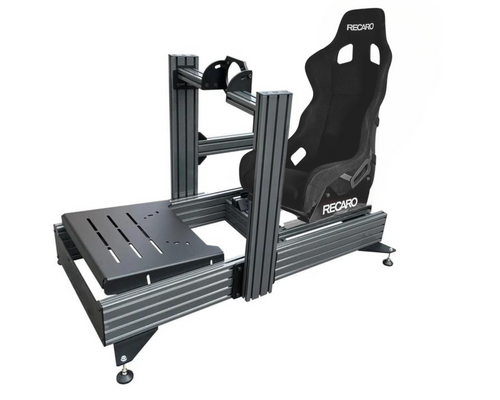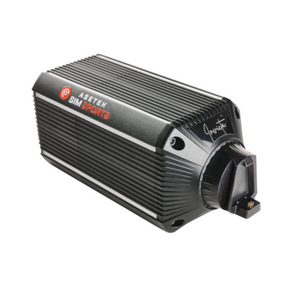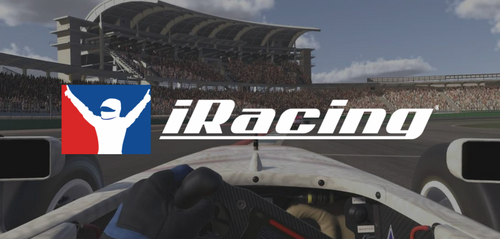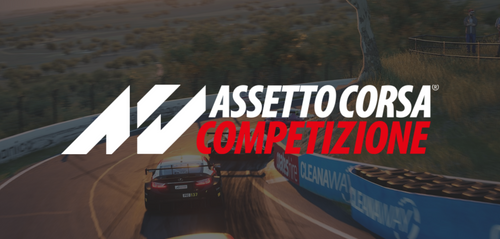Bo Jackson
March 13, 2024
Sim Racing: What Is It?
A Comprehensive Look at Sim Racing, Its Evolution, and How to Get Started
At Podium 1 Racing, we're not just enthusiasts; we're a collective of seasoned track vetrans. Our journey began on track, where our passion for competition and camaraderie led us to the amazing world of sim racing. With a focus on delivering high-quality, realistically immersive sim racing rigs, we saw an opportunity to help others out.
Leveraging our love for driving with business experience, we've forged partnerships with leading brands to bring top-tier racing experiences to our community. Today, we stand proud as the leading turnkey sim racing provider in the US, committed to offering products that meet our high standards.
- What Is Sim Racing?
- Sim Racing as a Professional Sport
- Building Your Racing Simulator
- How to Build a Simulator on a Budget
- So You've Built Your Sim, Now What?
- Conclusion
What Is Sim Racing?
Sim Racing, or Simulated Racing, brings the feel of real world motorsport directly to your home, allowing you to compete in highly realistic environments that mimic the dynamics of racing. Within the past 7-9 years, sim racing has gained tremendous popularity, giving fans and enthusiasts the opportunity to engage in competitive racing. But what is it?
Well, it is exactly as it sounds. As opposed to going to Road Atlanta on a Saturday, and tracking your car or competing in a race, you have the ability to do that online, using beginner or advanced peripherals to simulate how it feels to be there in real life.
Now, let’s get one thing straight. This isn't just gaming; this is a tool. People oftentimes hear “sim racing” and think “Forza.” I don't want to take anything away from console games, or the joy they have provided to me and countless others over the years, but the point I am trying to make is that games like these are not the ceiling of what is available.
How similar is it?
Many ask the question “why not just get a real car?” While many others assume sim racing is just another way to play video games in "moms basement". Professional drivers, amateurs and enthusiasts alike use sims to hone their craft, practice for race days, tracks and to learn and understand the basics of driving on a race track.
We see that ESports is carving out their niche in the sports arena. One in particular that stands out is Sim Racing, but why is that? Well, these meticulously crafted digital environments have had immense funding, time, and brain power put into them over the past decade or so. You’ll notice brands like Porsche, Mclaren, Lamborghini, and many others investing their resources into the sport, and for good reason. We see time and time again that sim racers are being drafted into real teams, and doing exceedingly well in real world racing. William Byron is a profound example of this. He got his start online, and championed his way to the podium at the Daytona 500.
Take a look at this video from Daniel Morad as he compares his driving experience on the real Indianapolis circuit in an AMG GT4 car vs iRacing in the same car at the same circuit.
Sim Racing as a Professional Sport
Once sat in front of the gaming console, Sim Racing has quickly shifted gears, allowing a huge leap towards opening doors for professional racing careers. This is not just because of recent technological advancements, but more of a reflection of a changing landscape. Every day, more and more people are getting turned onto the idea of sim racing, and the levels it can achieve. Let's dive in.
The Dual Paths of Professional Sim Racing
Seemingly, the world of professional sim racing unfolds along two distinct paths: the online battleground where racers can compete in front of large audiences and win prize pools similar to traditional sports. Or, the gateway to real-world racing, where their skills are translated into tangible track knowledge and expertise. Both avenues have helped send sim racing beyond a traditional hobby, positioning it as a path to building a career.
Online Sim Racing leagues and tournaments are increasingly popular, drawing both seasoned gamers and professional racers. Platforms such as iRacing, and Assetto Corsa offer competitions that replicate the intensity, strategy, and excitement of real-world racing. You need to strategize tire temperature, fuel efficiency, and pit box strategy, and develop your unique racecraft, just like the professionals. If you can dial that in, and become one of the best, you could win significant rewards in both prestige and prize money.
Sim Racing's authenticity has established it as a tool for both professional and aspiring racers. Its ability to simulate real-world physics and track conditions provides a safe environment for learning tracks, perfecting racing techniques, and understanding vehicle dynamics. With sim racers like William Byron transitioning from iRacing to winning the Daytona 500, the credibility of sim racers in professional events has only grown. With the release of the movie "Gran Turismo" more people are opening their eyes to the bridge between virtual and real-world racing, showcasing how sim racing can launch careers.

Building Your Racing Simulator
Building a sim racing rig is an exciting endeavor, but can feel incredibly intimidating. There are hundreds of products out there, with words thrown around like newtonmeter, load cell, peripheral, it can all seem challenging and confusing. We experienced this ourselves, and started with the classic Logitech G920. Boy, was that a ton of fun, and for a lot of people, as real life and immersive as they would like to get. But we didn't want to stop there.
As lovers of driving, we wanted something that would replicate exactly what it felt like to take our cars to the track. What did we do? We tried product after product to see what truly made the difference. Is Direct Drive really worth it? Should I prioritize monitors or haptics? All of that and more will be answered here, based on our experience.
The Chassis and Seat
Let’s start with the foundation. You will want to begin by selecting a sturdy chassis, the backbone of your rig. There are tons of quality options available, but it is important to consider flex. If you plan to add motion to your system, you open the door to weight being added in ways that the chassis was not originally designed to handle. Choose a chassis that is strong and sturdy. What we found works best is an extruded aluminum base. These have channels allowing you to add and swap peripherals as you see fit.
Paired with the right seat, these ensure comfort and realism. When searching for a seat, understand that you will be sitting in it for long durations of time. You want it to be comfortable, but also similar to the seat you will be driving in if you are modeling the system off of your own vehicle. We’ve always been a fan of Recaro products, and use their Sim Star seats on most of our systems in house. If the price point doesn't make sense to you, there are other options available to save, while obtaining the design you are looking for.

Monitors or VR for Sim Racing?
Immersive visuals are key. Whether opting for triple monitors, or diving into VR, the choice significantly impacts your racing immersion. This is a heavy topic of debate across the sim racing industry, and truly, it is subjective. Podium 1 provides triple monitors on all of our systems, because what we have found, VR is not quite at the level we need it to be for graphics. While Meta Quest and other companies continue to pave the landscape in gaming areas, it is not the leader for sim racing—which is why you need monitors. This is subject to change as VR technology evolves!
When it comes to which specific monitors, it all comes down to personal preference as well as budget. You may want a triple monitor setup, but splurging on 3 Samsung Arcs is not in the cards. That is okay! You can still develop your racecraft on a single monitor and make that goal to work towards.
Steering Wheels, Wheel Bases, and Pedals
1. Wheel Base: The heart of your sim lies in a high-quality motor. You have likely heard of Direct Drive, but what is it? Well, Direct Drive is a high-end force feedback technology that directly connects the steering wheel to the motor. This provides a much more immersive and realistic driving experience. It offers precise, detailed feedback, allowing drivers to feel every aspect of the car's behavior and the track's surface. Although more expensive, Direct Drive systems are more durable and offer superior performance. As we always say, “Buy right or buy twice.”
2. Pedals: Now for pedals, it gets to be more subjective. You could go the load cell route, like the Asetek Fortes, which essentially means that the brake force is measured by the pressure you apply. This relies on a “load cell sensor” to convert the force of your foot into a digital signal. Or, you could choose the hydraulic route, which means opting for pedals like the Heusinkveld Ultimates. This setup uses hydraulic pressure to mimic the brake feel, offering an even more realistic experience. Both options have their own benefits, so the choice comes down to personal preference and the specific feel you are looking to replicate.
3. Steering Wheels: Selecting a steering wheel might seem like the easy part, but ensuring it fits the wheelbase you choose, or works with a quick release adapter, is incredibly important. Opt for a wheel that replicates the type of vehicle you drive or intend to drive most often. If you're uncertain about what type of racing you’d like to do, a versatile option is key. For those starting out and seeking a quality, multi-use wheel, the Cube Controls GT Pro is an excellent option. It combines quality with versatility, making it ideal for beginners who want to experience different types of racing without committing to a specific style. Remember, the right wheel can enhance your driving experience, but wont ‘keep you off the walls.’



Motion System: Is It Worth It?
Haptic feedback systems elevate the experience by replicating the physical sensations of racing, from the texture of the track to the camber in a tight corner. If done poorly, it will translate to a negative experience. We see a lot of sim companies using large motion systems to try and replicate G-force, but that's not entirely possible without inertia—it's just physics. What you should prioritize are certain haptics like your engine vibrations, shifts, feeling the weight shift, etc... These are key, and what will ultimatley translate to the real track, enhancing your ability to anticipate and react as you would in a real car.
D-Box is king in this realm. They are FIA certified and for good reason. Their motion actuators simulate a wide range of sensations that drivers feel in the cockpit, from the rumble of the engine to the impact of hitting a curb. The level of detail D-Box offers ensures that every aspect of the drive is communicated, making it an invaluable tool for training and entertainment.
That said, not everyone can swallow the D-Box price point. For a more budget-friendly option, consider something like the ButtKicker. It's designed to add vibrations to your seat, simulating the thump of gear changes and the roar of the engine beneath you. While it won't provide the full spectrum of movement that a system like D-BOX does, it's a great entry-level haptic system that will boost your sim's realism without breaking the bank.
How to Build a Simulator on a Budget:
Your investment in your simulator depends entirely on your goals. Plain and simple. While entry-level setups can start small, advanced rigs, especially those looking for realism, require a much more significant build. However, regardless of your budget, the joy of racing should be priority, and there are ways to save money without sacrificing too much on quality.
If you are BRAND NEW to Sim Racing, and are looking to save money, start where many of us began: with a
If you're aiming for something a bit more "professional" but aren't ready to invest in a full Turnkey System, look at the Asetek SimSports La Prima bundle. This setup offers a fantastic entry point to higher-end sim racing with a 12NM direct drive wheel base, a Formula/ GT steering wheel, and load cell pedals—we learned what that was earlier, right? That paired with a pre-built chassis or extruded frame, you get to assemble the rig piece by piece, making it a fun project. This not only saves you money but also allows for customization and adaptability as you evolve.
In essence, building a racing simulator on a budget is entirely feasible. By starting with a solid but affordable base, opting for mid-range upgrades like the Asetek La Prima bundle when you're ready, and investing time in constructing a personalized rig, you can enjoy the amazing sport that is sim racing without overspending. Remember, the most important part of sim racing is the enjoyment and improvement of your driving skills, so choose options that align with your goals and budget.

So You've Built Your Racing Simulator, Now What?
Congrats! You did it. You've put in the work. Now, lets move onto the next step - choosing the right software to bring your rig to life. When it comes to choosing your software, there are plenty of options. Sure, iRacing is the big name on the circuit, known for their physics and realism. But let's not call it quits just yet. There's no rule stating you must pledge allegiance to one software. The beauty of sim racing lies in its diversity.
Choosing where to race is like picking the right car for the track; it depends on where you want to go and who you'll be racing with. As the old saying goes, "How do you eat an elephant? One bite at a time." My advice? Start with iRacing. It’s a fantastic foundation, teaching you the nuances of car control and racecraft. Once you have an idea of what it is like to control your car here, you can start expanding your horizons to other platforms. Each software has something unique to offer, enhancing your skills and enriching your experience. Whether it’s the community, the cars, or the circuits that draw you in



Conclusion
Whether you're just starting out or a seasoned pro fine-tuning your skills, at Podium 1 Racing, we get it—because we share your passion. Dive in, ask questions, connect with our community, and most importantly, enjoy the ride. Racing's competitive, sure, but the thrill should be priority.. Remember, it's all about the journey, not just the finish line. So, gear up, have fun, and make every lap count. See you on the track!

